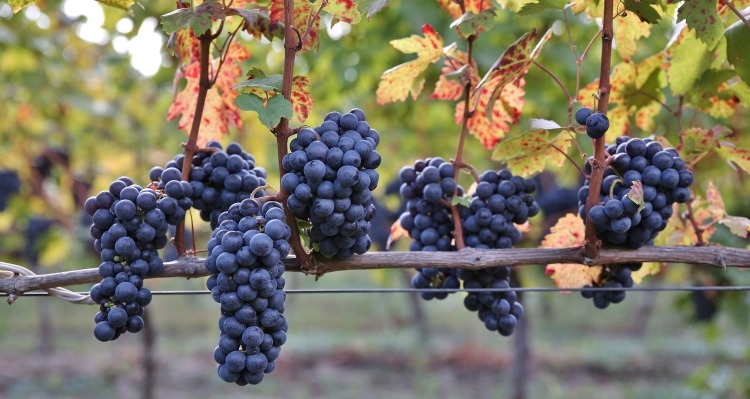Feteasca Neagra, meaning “Black Maiden”, is the flagship grape for Romania. It has been grown in the region for hundreds of years and, although low yielding and prone to disease, the use of new oak helps produce a well rounded and structured wine. If made well (which is not easy) the resulting wine will have lively acidity and be medium to full-bodied, pairing well with food such as goulash and duck. How nice does that sound!

The Dealu Mare wine region provides the perfect terroir for this grape, with its gently rolling hills providing ample sunshine exposure and drainage. Rainfall in the area is around 400mm during the growing period, so very close to optimum for cultivation. But human decisions and vineyard management are really important for this grape to reach full potential.
The vine is extremely vigorous but has quite low productivity so pruning is even more of a skill than it normally would be. Agronomists will leave more buds on the vine than with most other varieties and will also be extra vigilant in preventing and curing diseases as the grapes are thin-skinned and can spoil easily and

The timing of harvest is also tricky, especially as the bunches tend to ripen unevenly. The accumulation of sugars is never an issue, as the grape species (plus the excellent terroir) ensure this. But there may be the complication of reaching very high sugar levels before phenolic ripeness is reached.
New oak is often used, and sometimes overused, as a result of having these naturally high levels of alcohol. Hence winemakers who are searching for a better balance in the finished wine will order periods in Barriques. It is standard practice to use American oak to add a little more tannin and
As you travel on wine tours Romania with us, other than the wineries we visit and taste at, two extremely noteworthy examples of Feteasca Neagra that you might want to take home are Davino 2010 Purpura Valahica Feteasca Neagra from Dealu Mare (we can visit) and Titan 2013 from


